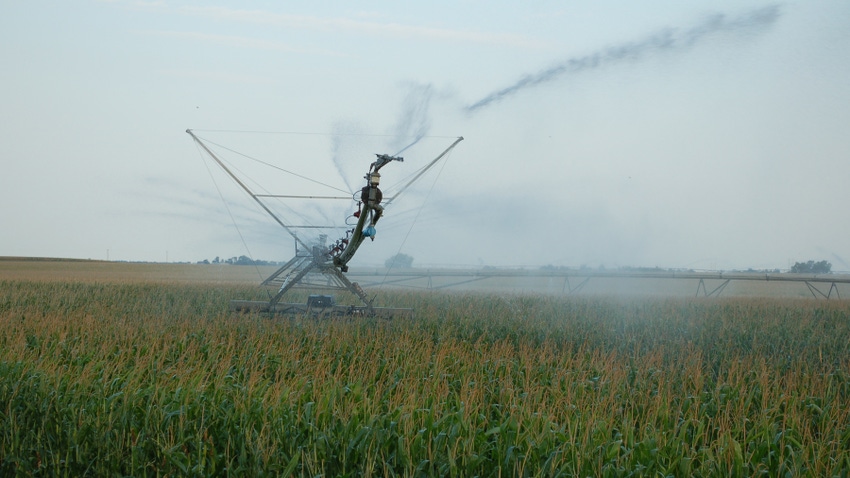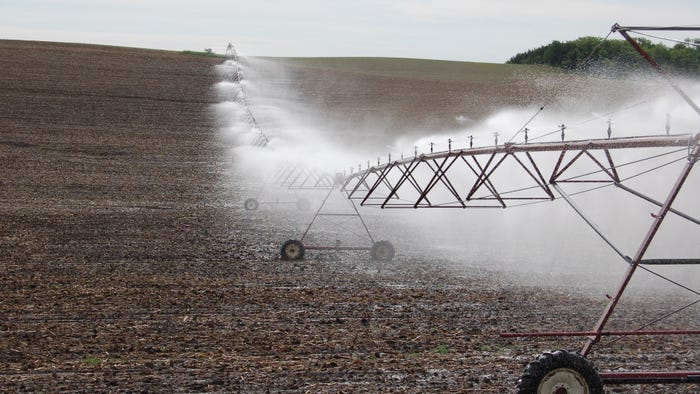
Nebraska is the top irrigation state, or at least that has been the case for the past few decades. More acres of cropland and pasture have been irrigated in the Cornhusker State than any other state in the U.S., including California.
After the most recent USDA Census of Agriculture from 2022, that long-known fact remains, but there is room for some debate.
Exactly how many acres in Nebraska are irrigated? With irrigation data so prominent across Nebraska, one might think it would be an easy question to answer.
However, there are varied reports, and the answer depends on the source of the data, how the data was collected, and if the acres reported were actually being irrigated, had the equipment and capacity to be irrigated if necessary, or were certified to be irrigated.
Census of Agriculture
From the most recent Census of Agriculture, it was reported that Nebraska had 7,965,938 acres of irrigated land as of 2022. Compare that with data collected five years ago — at 8,588,389 acres reported in 2017 — and it looks like the state has lost more than 600,000 acres of irrigated land.
Common sense would say that this isn’t possible, even with abandonment acres and easements that have set aside some irrigated ground and moved it into the rain-fed category.

DATA DEBATE: The 2022 Census of Agriculture reported 7,965,938 irrigated acres in Nebraska. Other data from the Nebraska Department of Revenue, Property Assessment Division — reported in 2022 and updated on June 1, 2023 — found 9,378,462 total irrigated acres in the state, but this represented the total acres that have wells or ditch water available and could be irrigated if conditions warrant.
Looking back at National Agricultural Statistics Service data from 1964, 2,169,000 acres were reported under irrigation at the time in the state, only 60 years ago, so the expansion of irrigation and the evolution of the center-pivot sprinkler systems is evident.
In 2007, the University of Nebraska was reporting an expansion of the irrigated land base by 934,000 acres from 2002 to 2007, running up to 8.56 million irrigated acres total. At the time, that was 15% of the irrigated land in the U.S.
NASS director speaks
Nebraska Farmer asked Nicholas Streff, regional director for NASS at the Northern Plains Regional Field Office, for assistance in understanding the numbers.
Streff notes that NASS added a question to the 2022 surveys about how many acres had irrigation equipment. The 2022 survey found 8,447,188 acres reported in that category, which is much closer to the number of irrigated acres reported in 2017.
He also notes that, while the census is mandatory, Nebraska had a 58.6% response rate, compared to 61% nationally.
“Census data is weighted for producers who do not respond,” Steff says. “NASS worked from November 2022 through July 2023 to gather data from producers to create the census report. We mailed, phoned and conducted personal interviews with as many producers as possible.”
He says that 2022 had a corn harvested-to-planted ratio of 91.9%, which is the lowest such ratio since 2012. In comparison, 2017 had very little abandonment, with a corn harvested-to-planted ratio of 97.4%, which is one of the highest such ratios in the past 10 years. This fact could have skewed the numbers reported in the most recent census.
NRD numbers
Another major report often used to help in the management of groundwater resources is Nebraska’s Groundwater Irrigated Acres report from 2022, administered though the state’s Natural Resources District system, per state statute 46-739.
This data, too, offers a snapshot in time of irrigated acres in the state, and where those acres are located. This report found 9,064,963 acres irrigated by groundwater in the state.
Broken down into NRDs, the least irrigated NRD is Lower Platte South with 28,300 acres, at only 0.3% of the total groundwater irrigated acres in the state. The most irrigated NRD is Upper Big Blue with 1,244,226 acres under groundwater irrigation, with 14% of the groundwater irrigated acres. These numbers do not include surface water irrigated acres.
But with the NRD numbers, there can often be a difference between the acres that are certified for irrigation, and the acres actually irrigated during that growing season.
Another interesting line of data from the NRD report is by management action. In 2022, the “over-appropriated area of Nebraska” for groundwater irrigation was reported at 811,178 acres, or 8.9%. Fully appropriated sat at 2,796,069 acres, or 30.8%.
Acres where there is a groundwater allocation in place were 1,799,479 acres, or 19.9%. Acres that have been retired from irrigation or banked were 69,451 acres, only 0.8%.
Nebraska Department of Revenue
Other data from the Nebraska Department of Revenue, Property Assessment Division, reported in 2022 and updated on June 1, 2023, found 9,378,462 total irrigated acres in the state — closer to the NRD acreage number.
But again, this represented the total acres that have wells or ditch water available and could be irrigated if conditions warrant. So, these acres were not necessarily irrigated in 2022, but they could have been, according to this report.
At the same time, while the actual irrigated acres in the state may be up for debate, the Nebraska Department of Agriculture reported in its most recent Agriculture Facts listings that Nebraska still outranked California in harvested irrigated acres in 2022 — at 7,857,031 acres — keeping the state in first place.
The same report notes that thanks to the Ogallala or High Plains Aquifer — which lies beneath 174,000 square miles in portions of eight states, including Nebraska — along with several other aquifers under the state, if that groundwater were poured out across Nebraska’s surface, it would run at a depth of 37.9 feet.
No matter which irrigated acreage number you wish to go with, there is little debate that Nebraska is fortunate to have plentiful groundwater, nearly 80,000 miles of rivers and streams, and continues to be among the most irrigated states in the country.
Check out the varied sources of irrigation data, including:
NASS Census of Agriculture at nass.usda.gov
Nebraska Department of Agriculture at nda.nebraska.gov
Nebraska Groundwater Irrigated Acres — 2022 at nrdnet.org
Read more about:
IrrigationAbout the Author(s)
You May Also Like






